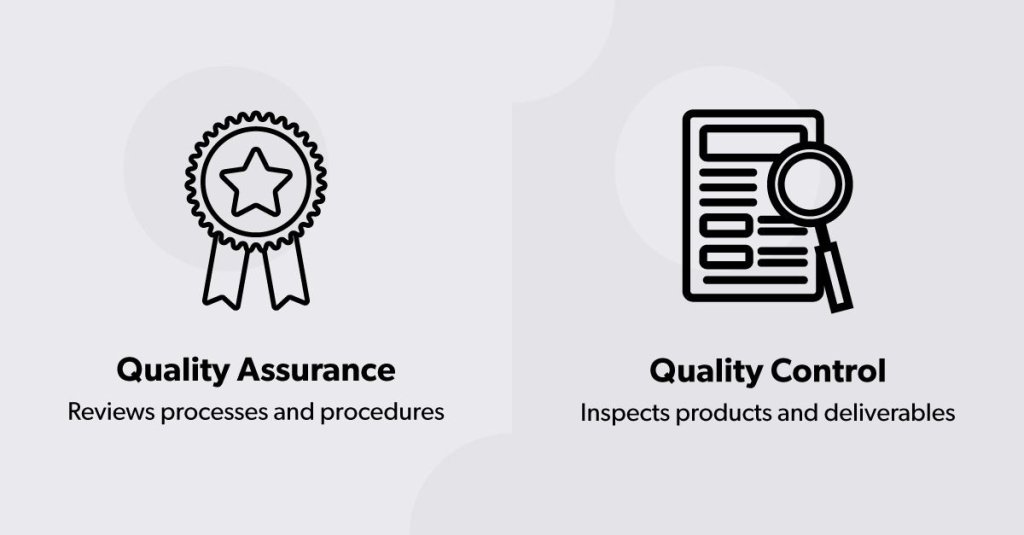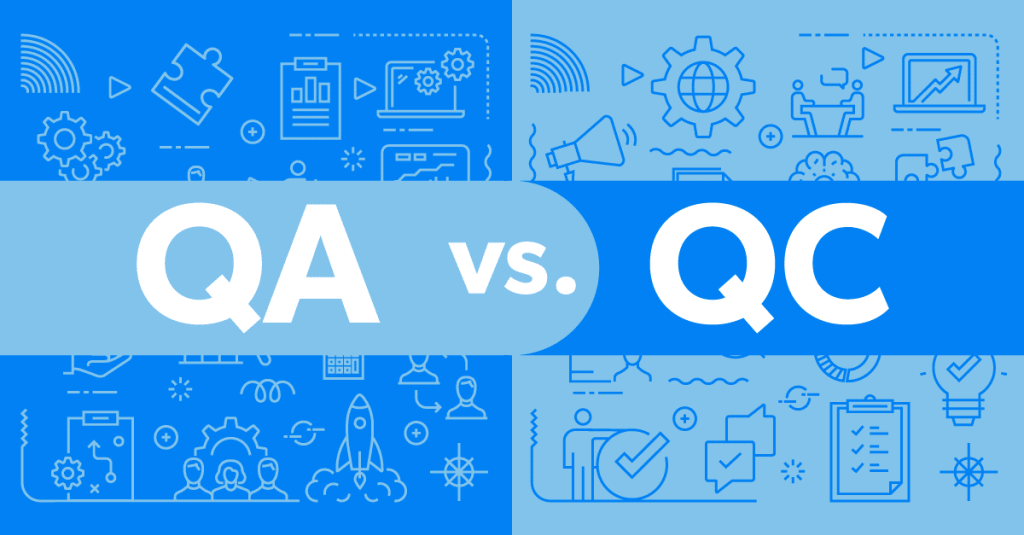The terms quality assurance and quality control may sound similar but actually describe two distinct functions in the construction industry. Understanding the difference between them can help you better improve quality management for your projects.
What is QA? What is QC? How do they differ?
Quality assurance (QA) and quality control (QC) are both part of overall quality management at a construction company. QA is focused on assessing and improving processes, while QC involves the inspection and final approval of project deliverables.
For example, when a business practices effective quality assurance, they frequently audit the way they work and make continuous operational improvements. QA reduces the risk of errors and inefficiencies during the construction process.
A business that practices effective quality control will establish thorough inspection procedures to review all completed work for defects before it is turned over to the project owner.

While QA and QC are different, they are closely related, and it is easy to see why the terms are sometimes used interchangeably by mistake. As the American Society for Quality explains, “Typically, QA activities and responsibilities cover virtually all of the quality system in one fashion or another, while QC is a subset of the QA activities.”
This means QC is a specific part of QA, which is more of an umbrella term that captures a wider variety of quality management strategies. Improving QA will often involve taking a look at your QC procedures as well.
How to improve QA in construction
The first step for improving quality assurance at your construction company is critical assessment. You’ll need to:
Review historical data
Identify areas for improvement
Communicate updated policies and procedures to employees
Monitor progress
Review historical data
If you don’t understand your current processes, it’s difficult to improve them. Closely documenting project progress as you move through the different stages of planning and construction provides valuable historical data you can use to make impactful quality assurance changes.
Start with projects that were affected by quality concerns. What went wrong? Trace the cause of each concern to the source—It could be anything from design errors, a miscommunication, or poor safety conditions on the jobsite. Take note of any common issues.
Identify areas for improvement
Based on your findings, determine whether or not a process change could have prevented mistakes or delays to the project timeline stemming from quality concerns.
Maybe your team has found several incorrect measurements in project blueprints well after starting construction. You may need to add another layer of review before designs are sent to production.
Or, you could find that multiple projects have been delayed because of rework due to clients misunderstanding what type of materials would be used for specific project elements. Establishing a submittal procedure can prevent similar miscommunications in the future.
Communicate updated policies and procedures to employees
If you’ve decided to update or add any new processes, you need to clearly communicate those changes to your employees, especially those who will be directly affected.
Clearly explain that you are making changes to improve quality assurance and describe how the new policies and procedures will fit into current operations.
Monitor progress
Once you have implemented your quality assurance changes, you should continue to monitor project progress. You may need to make further adjustments or try different solutions depending on the results.
How to improve QC in construction
Improving quality control in construction is a more concrete process than improving quality assurance. Consider implementing:
Quality control checklists
Jobsite photo and video documentation
Improved communications
Quality control checklists
On a busy jobsite, it’s easy to forget steps or overlook small details. Using a quality control checklist helps field crews make sure they’re performing QC inspections properly.
Make completing a quality control checklist a standard part of the construction process. Depending on the size of the project and the scope of services, you may need several different types of QC checklists or separate checklists may need to be completed at different phases.
With a checklist, you can catch QC issues early, before work is reviewed by your client, or correct any foundational mistakes before they negatively affect dependent tasks. Attach checklists to daily reports for a record of when QC was conducted.
Jobsite photos and videos
There’s a reason the saying “a picture is worth a thousand words” is popular. Using jobsite photos or videos in the quality control process gives project managers and other stakeholders who can’t personally monitor the jobsite each day better visibility at a glance.
With photos, videos, and other visual media, management can more easily identify quality concerns their crews may not notice or be aware of than when reviewing text-only reports and documentation.
Improved communications
Miscommunications are a leading cause of rework in construction. Focusing on improving communication leads to better quality control. This applies to both internal communications and sharing progress updates with clients.
When field crews have clear expectations, they are more likely to self-identify quality concerns. Establish quality standards and make them a part of company policy.
You should also establish a structure for reporting quality issues. Make sure your crew understands that if they notice a QC concern, they should report it immediately.
Likewise, provide frequent progress updates to your clients—don’t wait until a project or phase of a project is near-finished to communicate with the project owner. Keep them engaged and involved.
This prevents some minor misunderstandings from developing into costly disputes.
How Raken helps construction quality management
Raken’s construction quality management software improves quality assurance and quality control without taking extra time from the workday.
Our digital daily report templates—with date-stamped photo and video capture—and our library of QC checklists help contractors quickly monitor quality in the field and submit progress updates to the office instantly. Gain real-time insights and save all documentation in easy-to-search cloud storage for future reference.
Raken reports can be automatically published into organized and branded PDFs too, so you can share them directly with clients.
